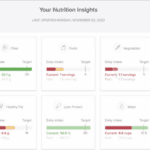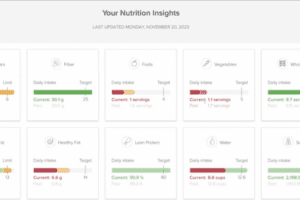The following is a guest article by Holly Miller, President at Collette Health (formerly MedSitter)
Amid the many challenges in healthcare, an emerging central theme is how to balance technological innovation with a compassionate human touch. Luckily, the advent of AI-enabled virtual care and machine learning has introduced a whole new world of virtual clinical observation. This not only bridges the gap between empathy and technology but goes beyond mere observation, offering a tech-assisted safety net that enhances the overall patient experience.
The patient experience has always been a top concern, but health systems constantly grapple with barriers like limited time, funds, and resources. A glaring example of these challenges is the current nursing shortage, projected to leave the U.S. with a deficit of 200,000 nurses by 2030.
At the same time, patients and their families increasingly expect more from healthcare providers. This is especially true in high-acuity care settings, where timely bedside responses are both critical and complex. Patients, already in a vulnerable state, find themselves waiting for assistance when they most need it. Add language barriers to the mix and the potential for a poor patient experience is ripe, leading to potential negative outcomes for patients and providers alike.
Elevating Patient Communication and Building Trust
The traditional method of patient supervision, particularly for those in a compromised state, demands a one-to-one observer-to-patient ratio, placing significant pressure on nursing resources. However, virtual clinical observation revolutionizes this approach, with a single observer able to monitor up to 10 patients at once on a single screen. This boosts efficiency and lightens the load on an overburdened nursing department.
With this system, patients don’t have to wait for a healthcare professional to be physically present to answer a question or address a concern. A clinician can observe, assess, and communicate with the patient, creating an immediacy that bolsters the patient’s sense of safety, elevates their overall experience, and can help mitigate feelings of neglect or frustration.
Language barriers, which can cause communication delays and frustration with both patients and healthcare workers, are also minimized. Natural Language Processing (NLP), which allows computers to process and manipulate text, can reduce communication barriers between high-acuity patients and critical care clinicians. For instance, if a patient uses ASL or another language unfamiliar to the observer, the technology’s real-time communication tools can swiftly translate or interpret. This ensures that patient needs and concerns are promptly addressed, which not only improves their overall experience but fundamentally increases their safety.
Redefining Patient Safety and Experience with AI and Machine Learning
Observers, with the ability to oversee up to 10 patients on a single screen, can detect and intervene in potential risks. For instance, if an elderly patient tries to get out of bed—a common precursor to injurious falls—the system allows for speedy intervention, either by alerting onsite staff or through direct communication with the patient. This instant intervention reduces the window of vulnerability, mitigating potential accidents before they occur.
Then there’s presence detection capability, which uses AI and machine learning to help virtual observers remain focused on patient care. If an observer’s attention strays for too long, the system alerts them with visual and audio notifications. Notifications intensify if not addressed, reinforcing consistent engagement. Moreover, healthcare organizations can tailor notification thresholds to meet their specific requirements, ensuring both flexibility and adaptability.
The value of this solution transcends monitoring; it enhances a patient’s total experience and positively impacts HCAHPS scores. Companies can foster a healthcare atmosphere where patients are assured of their safety and well-being at all times.
As the healthcare industry grapples with numerous challenges, the interplay between compassionate human touch and technological innovation takes center stage. The convergence of mounting nursing shortages and heightened patient expectations has underscored a pressing need for new solutions. The advent of virtual clinical observation elegantly bridges this gap.
Virtual clinical observation represents the next generation of virtual care, merging the innate human desire for connection with the precision of advanced technology. It serves as a powerful reminder that while technology offers powerful tools, it’s the human application of those tools that truly transforms and elevates the patient experience.
 About Holly Miller
About Holly Miller
Holly Miller is a dynamic healthcare IT leader, currently serving as the President of Collette Health (formerly MedSitter), where she leverages her profound expertise in business scaling, stakeholder value creation, and complex problem-solving. For over 20 years, she has driven revenue growth in the acute and post-acute SaaS sectors. Miller’s previous experience includes Chief Revenue Officer at PlayMaker, which led to a successful acquisition by Trella Health, backed by Cressey & Co. A fervent advocate for the digital transformation of healthcare, Holly is dedicated to implementing virtual care solutions and focusing on clinician experiences as pivotal strategies to mitigate the growing challenge of clinician burnout, thereby improving the experiences of both patients and providers.













